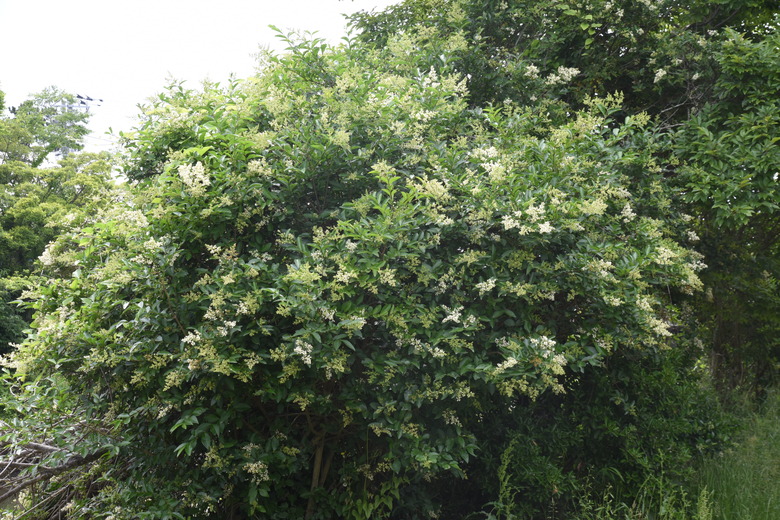How To Cure Fungal Leaf Spot In Ligustrum
You'll notice the brown spots immediately if they appear on the glossy green leaves of your privet plant (Ligustrum spp.). Whether your shrub is deciduous, semievergreen, or evergreen, it's the attractive leaves that hold your eye. Fungal leaf spot marks those pretty leaves with hard-to-miss, giraffe-style spots, and the disease is easier to prevent than to cure.
Meet the Privet
Meet the Privet
"Privet" sounds like a neat plant used in hedges in cottage gardens, but that impression is not entirely correct. Common or European privet (Ligustrum vulgare) is a wild child, escaping cultivation in U.S. Department of Agriculture plant hardiness zones 4 through 7 and earning the label "invasive."
Other privets are more mannerly, like Japanese privet (Ligustrum japonicum), which presents as a compact, evergreen bush growing to 10 feet in USDA zones 7b through 10 and is an ideal hedge plant that responds well to shaping. Even this species, however, has been known to escape cultivation in the South, as has glossy privet (Ligustrum lucidum) in USDA zones 8 through 10. All these species and most other privets are vulnerable to fungal leaf spot.
Understand Leaf Spot on Privet
Understand Leaf Spot on Privet
When your privet leaves are marred by yellow or brown spots with distinct borders, the smart money's on Cercospora leaf spot, a common disease of privets. Fungal leaf spots like this one do not stop willingly after a few brown dots.
Left to their own devices, the spots increase, merge, and kill the leaf. In time, the disease may seriously mar the plant. The spots are actually lesions that produce spores that are carried on the wind or water to infect new leaves. Much of the reinfection comes from diseased leaves that fall to the ground.
Prevent Leaf Spot on Privet
Prevent Leaf Spot on Privet
Good cultural practices are a gardener's best bet against leaf spot diseases on a privet. This starts with good watering habits.
Fungal diseases appear during the wetter seasons of the year, and your privet's chances for infection increase if you get water on its foliage when you irrigate. Always water in the morning to give the shrubs a chance to dry out before nightfall. Use a drip system or a soaker hose or just be careful.
Prune to increase the airflow between shrubs to help keep them dry. It's also important to fertilize appropriately and remove all dead and fallen leaves from beneath the plants. Do a major cleanup in autumn but also periodic cleanups throughout the growing season. Leaf-spot reinfections often come from fallen leaves, not those hanging on the plant.
Use Fungicide as a Last Resort
Use Fungicide as a Last Resort
Most of the time, you can keep your privet safe and spotless with good cultural practices. It is best if you do rely heavily on prevention since Cercospora leaf spot resists fungicides available for home use.
Mild cases of leaf spot may not merit fungicide application, but if you decide that the health of your plant is at stake, you can call in an expert to apply either myclobutanil or azoxystrobin products. These professional-use-only fungicides work well against fungal leaf diseases in privets.
